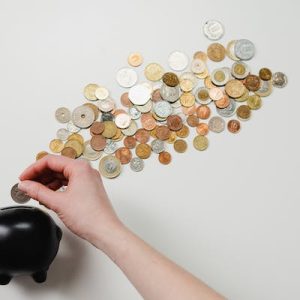Checking account is held for transaction purposes and the financial institution in which it is created allows you to deposit and withdraw money. Money in checking account features liquidity and can be taken off by writing checks or via automated cash machines, electronic debts or other methods.
Checking account is one of the many types of accounts that you can open in a bank. Knowing about it in detail will help understand its benefits, and also assist you in choosing the right kind of account.
Here is a quick guide on checking accounts:
1. What is the Difference
As you know there are many types of bank accounts and there are several differences between checking accounts and other accounts. With checking accounts, you will enjoy the privileges of unlimited deposits and withdrawals, both of which are a big miss in case you have a savings account. Checking accounts include student accounts, joint accounts, and business accounts and there are several other types having the same features.
A checking account is also known as transactional account or demand account. Though checking accounts offer liquidity manifesting through quick deposits and withdrawals several times but this advantage comes at the cost of low-interest rate.
2. Checking Accounts in the Bank
Usually, all banking institutions will allow their customers or to-be-customers to open a checking account. You may be charged with no fee or a minimum fee. With the advent of the e-banking system, people can now automate payment procedure for monthly expenses with the help of checking accounts.
Larger commercial banks consider checking or transaction accounts loss leaders as these are heavily commoditized. That is why banks are offering a low fee. These banks want their customers to turn attention to more profitable features like CDs or certification of deposits, mortgages, and loans.
Due to the liquidity of money in checking account, aggregate balances throughout the nation are taken into consideration to calculate MI money supply within the economy.
3. How to use Checking Accounts
You can set up a checking account in banks and financial institution via their websites. You can personally visit, but doing online is more convenient. There are many ways you can deposit money in the account like ATMs, over the counter in the bank or direct deposit it. To withdraw the money you need to use the checkbook, ATM, Debit or Credit card associated with the account.
Thanks to the advancement in technology, people can now operate their accounts from their electronic devices right from the comfort of their homes. You can also automate payments with the help of the internet and electronic devices.
4. Checking Account Features
Knowing about the features of checking account will help you decide if you need it or not. Consider the following features before opening a checking account:
• Fees
When it comes to fees related to the checking account, the information about the fees is somewhat obscure. There are certain things about the fees that banks won’t tell you outright. You can read it in the terms and conditions though.
Suppose, you don’t enough fund in the account in the transaction, but you make a transaction anyway, the bank will cover the difference. This is known as overdraft protection. What you might not know is that the bank will charge you hefty fees for each overdraft you take.
One way to avoid hefty fees is to choose a checking account that doesn’t come with such fees or link your accounts so that you have enough fund.
• Service Charges
Banks have to maintain accounts that are generating income for them as well as for accounts that are not. To cover the expenses, it charges services fees. The customers need to maintain a minimum balance and if they fail to do so, the bank will charge them with fees. If you want to avoid such heavy fees you can ask them to waive it. If you ask them politely and explain your situation the fees might be reduced. This can only work with large banks as they are financially more apt at dealing with things like this.
5. Checking Account and your Credit Score
The credit score is very important if you want to take out loans and mortgages. Your checking account may affect your credit score. While there is no direct impact, under certain circumstance you checking account activities may affect your credit score. Your overdrawn checking account will not impact the credit score report if you manage the balance in a timely manner. However, some banks can make a detailed inquiry about your track record of handling the money when you apply for checking account. So, keeping the future in mind, you need to make sure that your checking account is well maintained.
The Bottom-Line
Checking account is perfect for people and institution that make a transaction on a daily basis. Knowing about its feature, benefits, and liabilities will help you choose the right account as well as handle it more effectively.



